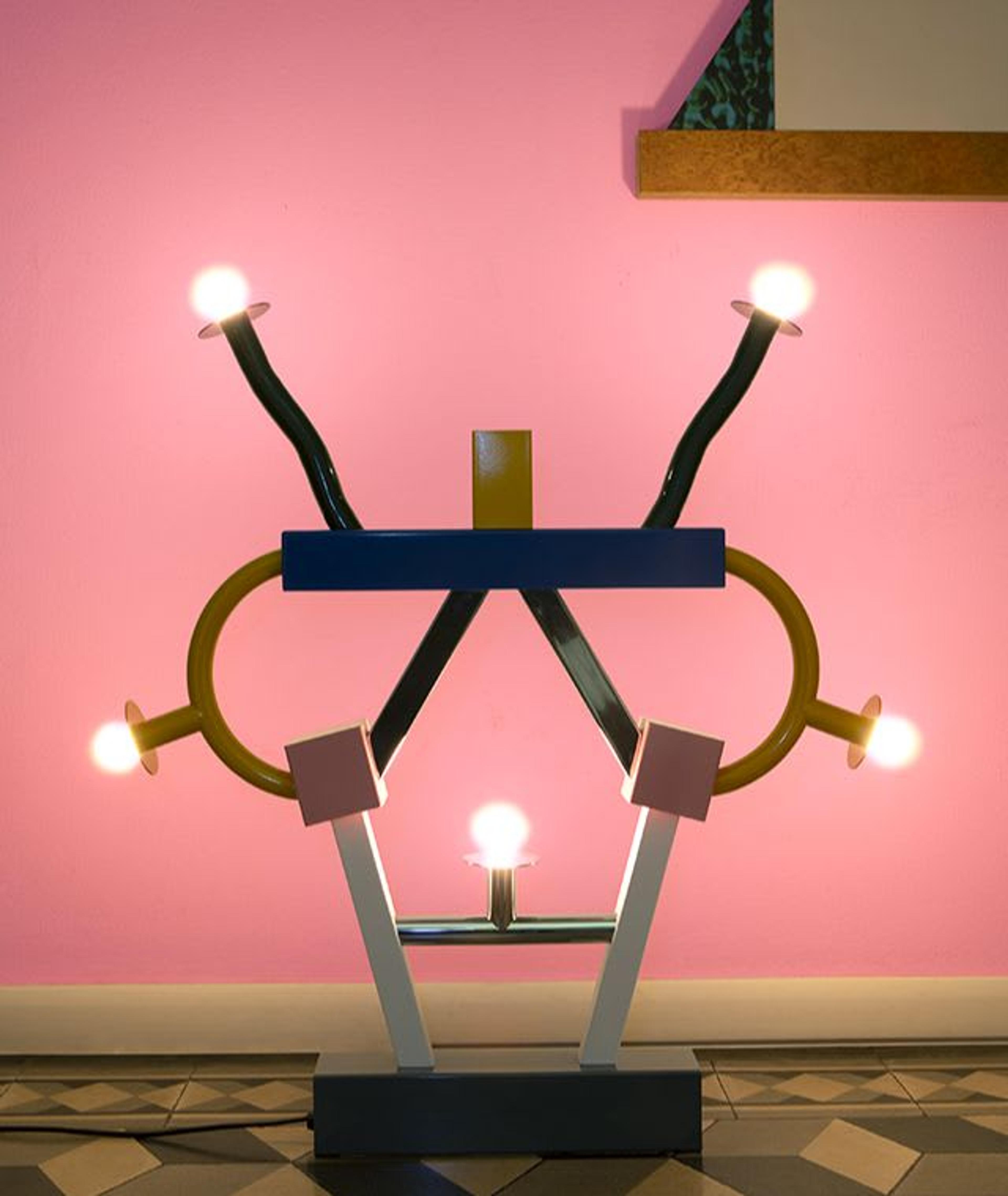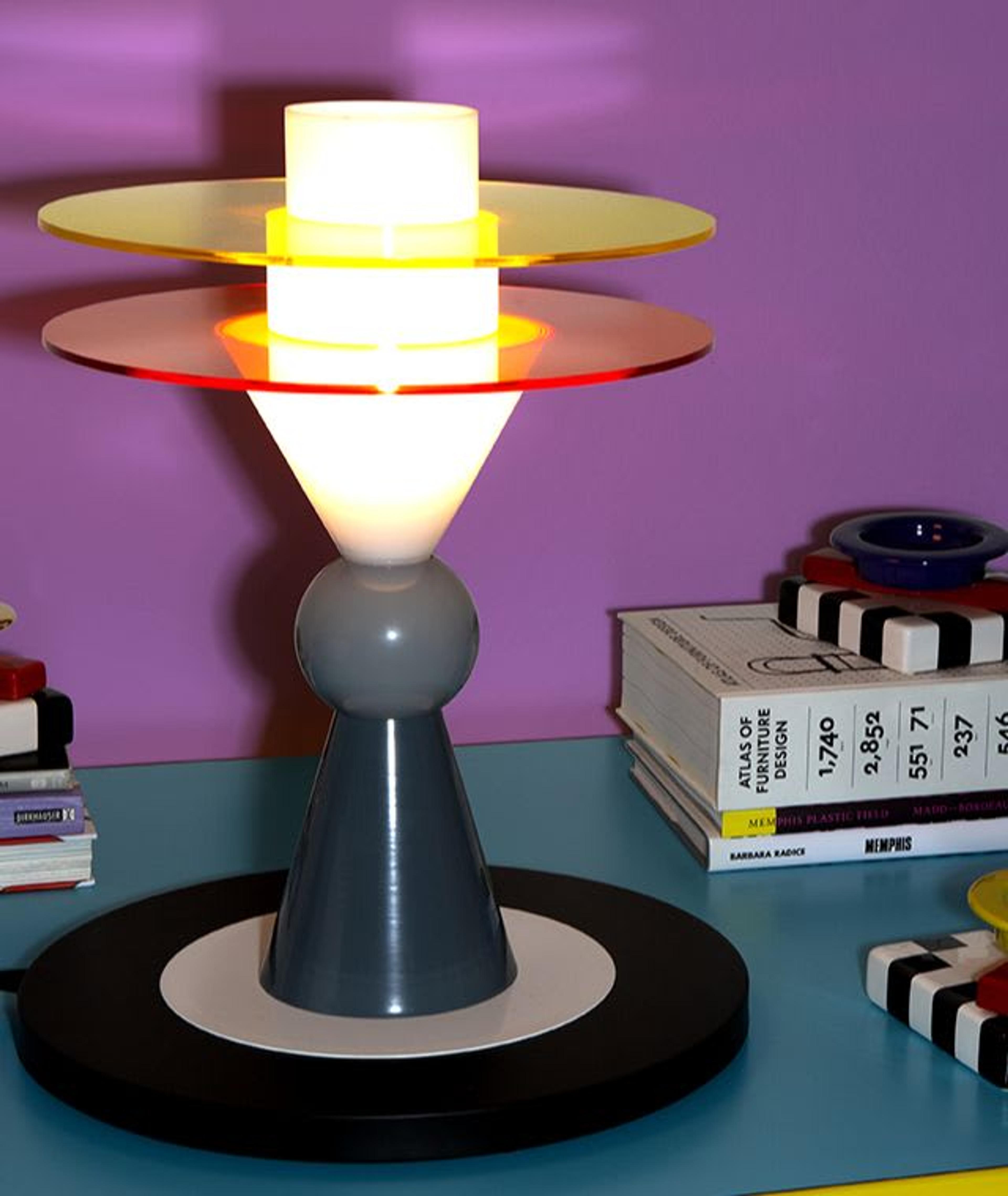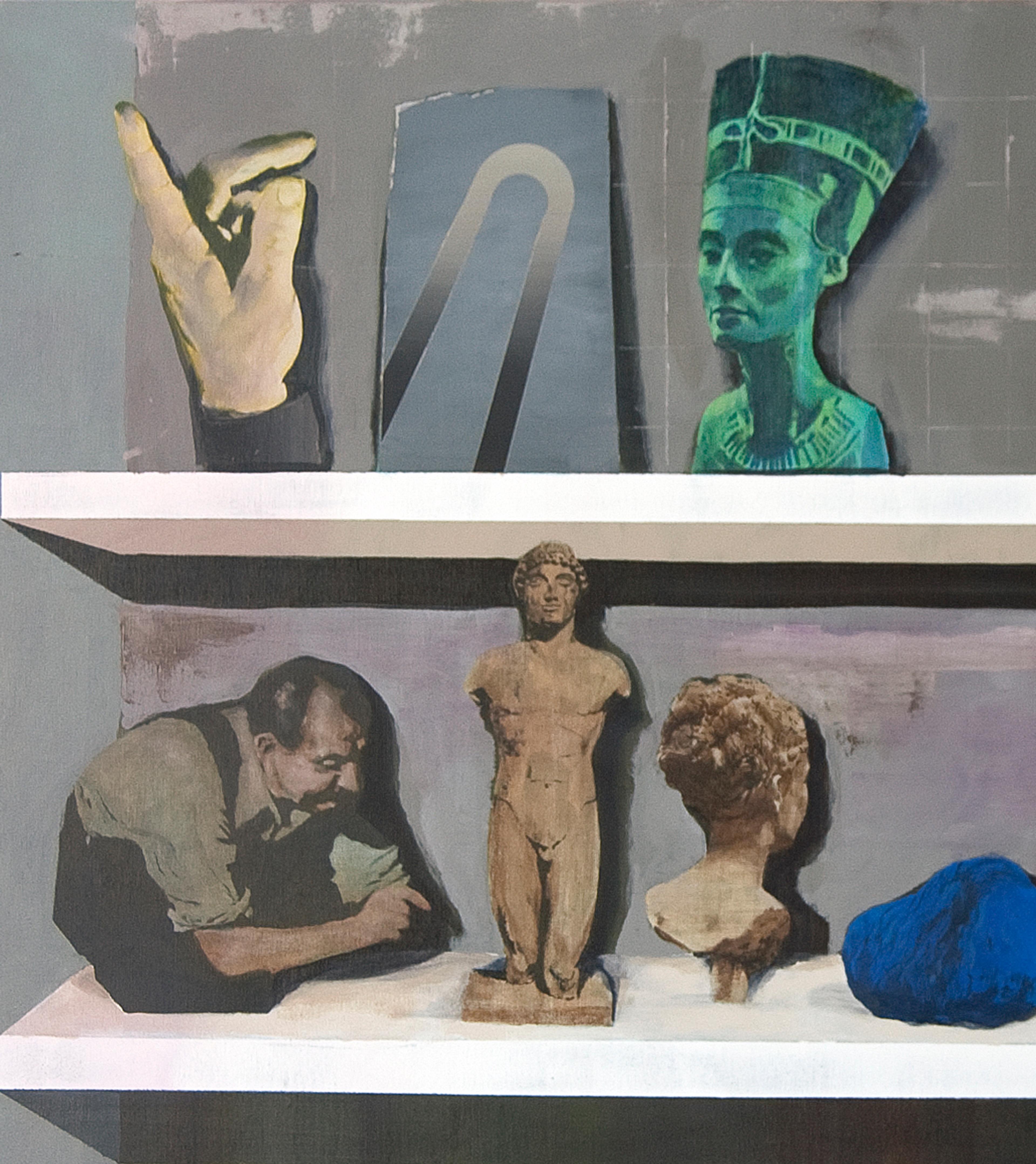
Memphis: 40 años de elegancia excéntrica
Con motivo del 40 aniversario de Memphis, descubra la fascinante historia de una de las marcas de diseño italianas más emblemáticas. En los años 80, sus colores brillantes y estampados juguetones se convirtieron en una declaración poco convencional frente a la rigurosa funcionalidad. Lea nuestra entrevista con el propietario de Memphis, Alberto Bianchi Albrici, para conocer desde dentro esta marca sofisticadamente irreverente.
El contenido de esta página ha sido traducido automáticamente. Visitar el sitio en ingles
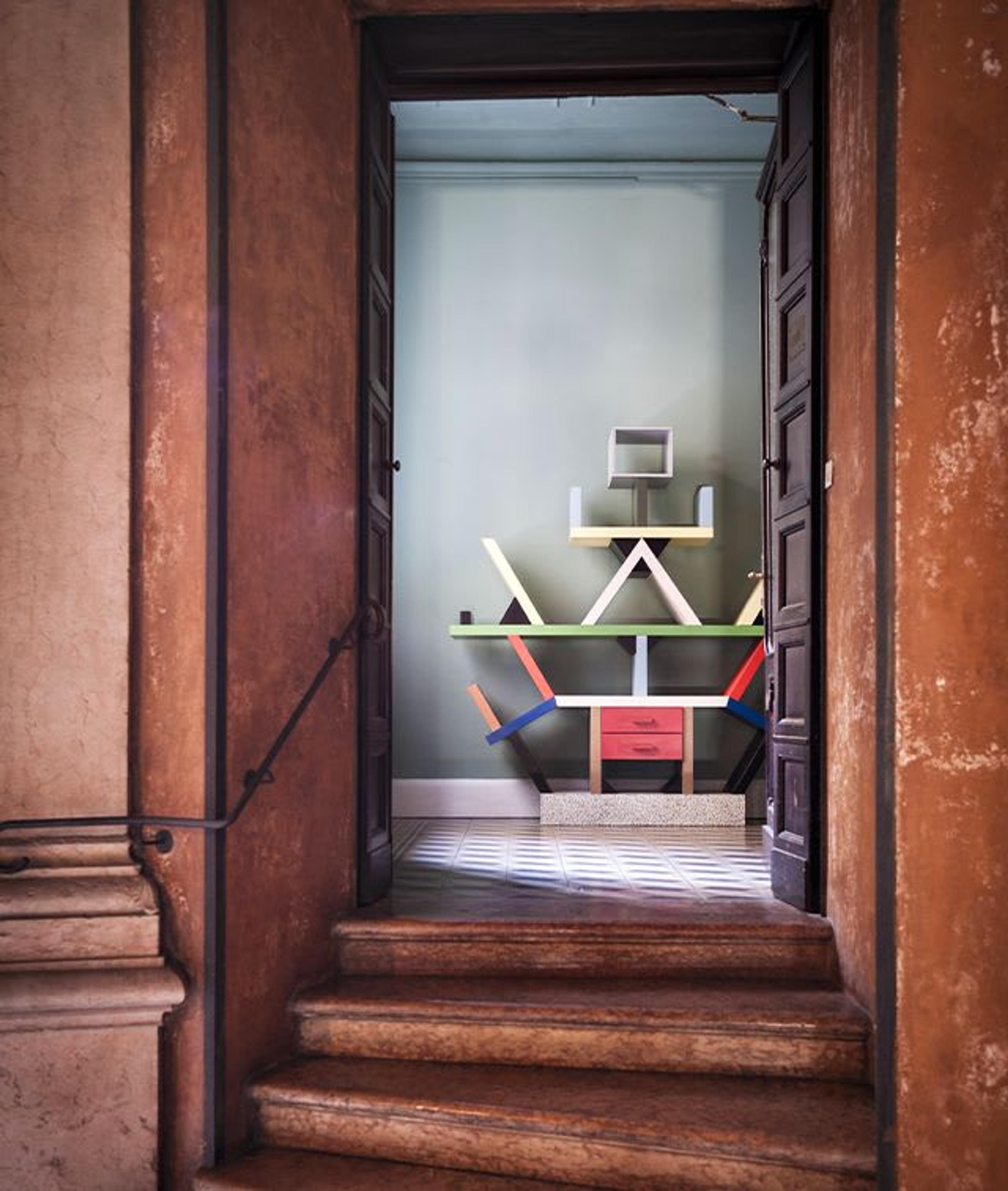
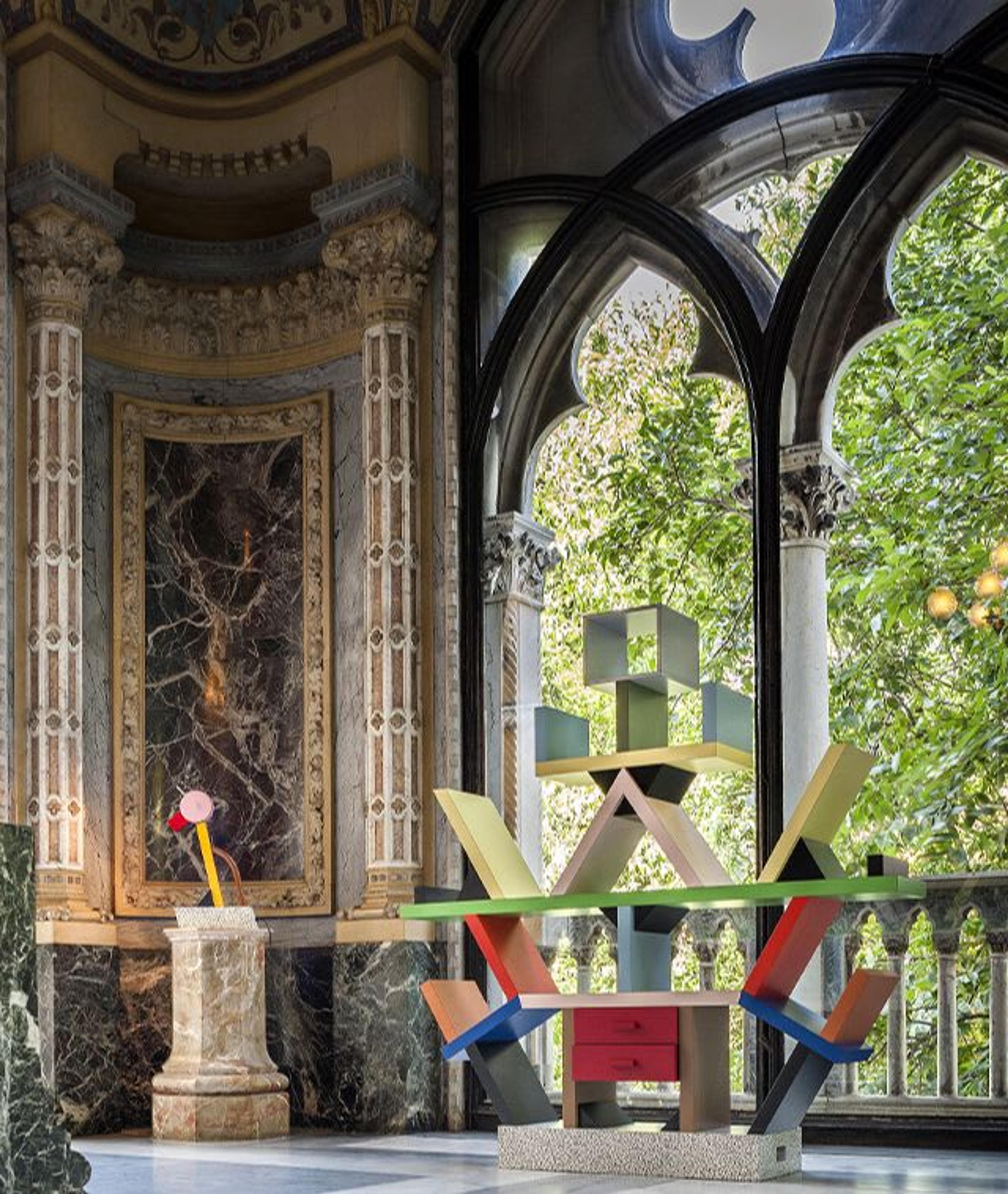
A finales de 1980, un grupo de diseñadores y arquitectos se reunió en el salón de Ettore Sottsass y sentó las bases de una nueva forma de imaginar el diseño, dando vida a un auténtico movimiento artístico. Con la canción de Bob Dylan "Stuck Inside of Mobile with the Memphis Blues Again" sonando de fondo, nació Memphis, nombre que hace referencia a la antigua capital de Egipto, así como al lugar de nacimiento de Elvis Presley y Aretha Franklin. La primera colección de 55 productos se presentó en el Salone del Mobile de 1981, en la sala de exposiciones Arc '74 de Milán. Multitud de personas se agolpaban a las puertas de la galería para descubrir este nuevo lenguaje de diseño hecho de formas irracionales, patrones lúdicos y materiales poco convencionales como los laminados plásticos.
El primer grupo de diseñadores, formado por Aldo Cibic, Matteo Thun, Marco Zanini, Martine Bedin, Michele De Lucchi, Nathalie Du Pasquier y George Sowden, bajo la dirección de Ettore Sottsass, pronto se convirtió en un vibrante nido de talentos. Memphis obtuvo rápidamente un gran éxito de público, ganándose el corazón de artistas y celebridades internacionales. Sus colecciones destacan por un particular entusiasmo imaginativo, por romper las reglas del diseño académico abriendo sus límites a colores, patrones y formas extrañas. Con Memphis, la excentricidad se convirtió en un estilo propio, expresión del crisol cultural de la época.
El sueño de Memphis llegó a su fin en 1987, pero la producción creativa siguió mirando al futuro con Meta Memphis y Post Design, manteniéndose fiel a su espíritu irreverente autóctono. Lea nuestra entrevista con el propietario de Memphis, Alberto Bianchi Albrici, para saber más sobre un icono del diseño italiano.

Memphis nació de una ocasión de convivencia: una velada con amigos que compartían las mismas pasiones y la urgencia por redefinir los términos del diseño. ¿En qué medida ha influido este aspecto en el desarrollo de su estética lúdica e irreverente, a la hora de definir no sólo un movimiento, sino también el auténtico "espíritu Memphis"?
La convivialidad formaba parte del modo de vida de Ettore Sottsass, pero no existen vínculos particulares con Memphis y su lenguaje estético. Sottsass siempre había desafiado con inteligencia e ironía el fariseísmo burgués de los círculos de élite, tanto antes como después de Memphis. Con Memphis, Sottsass creyó posible crear una producción industrial al alcance de todos -colorida, asequible y accesible-, pero su sueño se convirtió enseguida en una utopía.
¿Qué importancia tuvo la ciudad de Milán en la fundación del movimiento? ¿Podría haber nacido Memphis en otra ciudad?
Milán ofrecía todas las condiciones externas necesarias: el prestamista, el productor, el expositor, el distribuidor, la sede del estudio de Sottsass (donde trabajaban o hacia donde gravitaban los diseñadores), la prensa internacional y el Salone del Mobile. Sin embargo, el movimiento también podría haber nacido en otro lugar: en el pasado, la Toscana y Florencia habían visto nacer y desarrollarse otros importantes movimientos y empresas vinculados al diseño y a Sottsass, como Poltronova o Superstudio.

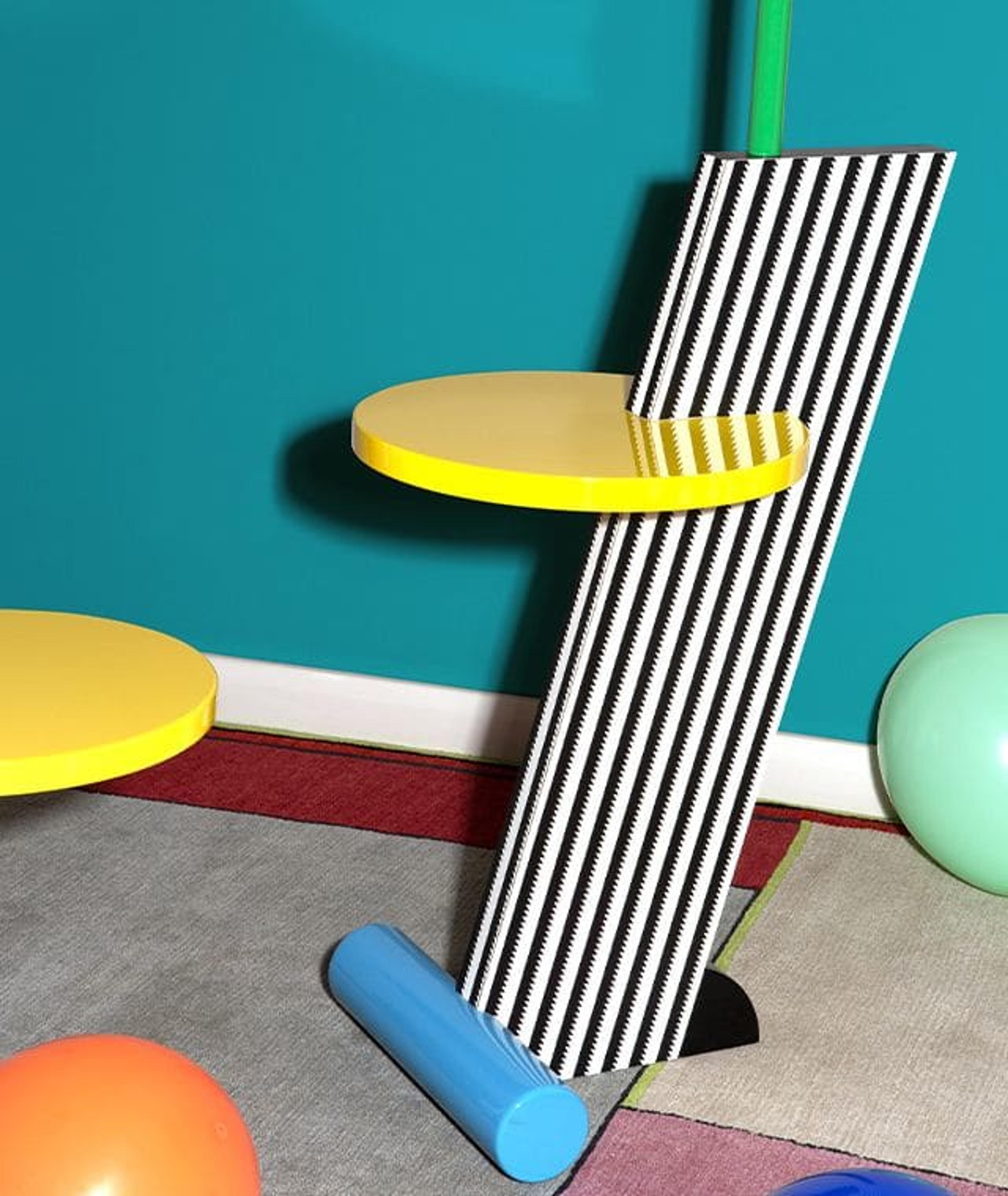
Memphis era representativa de las circunstancias culturales de los años ochenta. ¿Cree que todavía hoy es posible que una marca encarne los cambios de un periodo histórico concreto, de modo que su mensaje se convierta en parte de la función del objeto?
Memphis fue la respuesta a las turbulencias y pasiones específicas de una época pasada. Hoy en día, el contexto geográfico, los métodos de utilización y producción, las formas en que vivimos y compramos objetos de diseño han cambiado. El fenómeno Memphis no podría haber nacido hoy, aunque ahora seamos testigos de una gran atención y resurgimiento de este movimiento.
Memphis va más allá de la lógica del diseño y da un vuelco a los cánones tradicionales, hasta el punto de que se asocia a un auténtico movimiento artístico. ¿Cuál es el vínculo entre sus creaciones y el mundo de los coleccionistas? ¿Cómo describiría su tipo de coleccionista?
Como hemos dicho, Memphis se concibió precisamente en oposición a este tipo de lógica, pero en cambio los coleccionistas e intelectuales fueron los primeros en dejarse seducir por ella y comprar piezas de Memphis. Las famosas y extensas colecciones de Memphis pertenecientes a Karl Lagerfeld y David Bowie, por citar sólo a algunos, dicen mucho de sus coleccionistas tipo: cultos, de mente abierta, inconformistas.
La cama Ring es una de las piezas más icónicas del movimiento, que aparece sobre todo en la famosa fotografía de todo el grupo. ¿Qué representa esta pieza para la marca y su identidad cultural?
La cama Ring, así como la librería Carlton de Sottsass, son piezas emblemáticas de la colección: icónicas pero esencialmente inutilizables. Como todas las piezas de Memphis, la forma no sigue a la función (como predican el racionalismo y el sentido común), sino que la precede, por lo que la función resulta totalmente irrelevante.
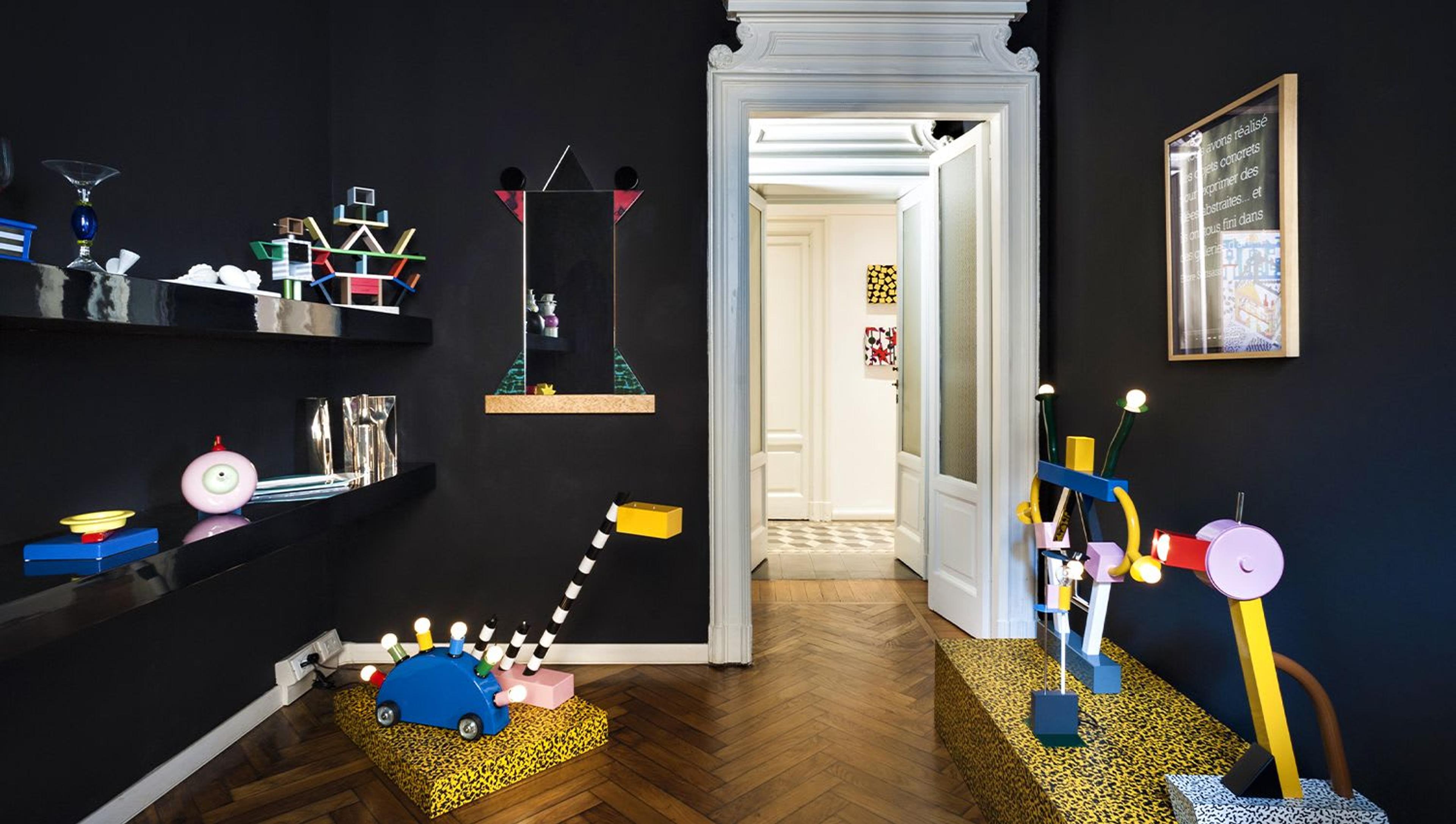
Memphissiempre ha sido y sigue siendo un vivero de artistas de talento: ¿cuál es el enfoque actual de la marca a la hora de descubrir diseñadores emergentes?
La historia creativa de Memphis-Milán, que comenzó en 1980/81, llegó oficialmente a su fin en 1988. Desde entonces, ha habido un cuestionamiento y una reflexión constantes sobre ese momento irrepetible, con resultados muy diferentes -a menudo antitéticos, a veces en continuidad-, primero con Meta Memphis y después con Post Design.
En 2021, Memphis celebró su 40 aniversario: ¿cómo ha cambiado y evolucionado su lenguaje artístico con el paso del tiempo y, de cara al futuro, cómo seguirá conectado con la tradición?
Intentamos mantenernos fieles a lo que consideramos la mayor enseñanza de Sottsass: estar abiertos, libres de prejuicios y sentir curiosidad por todo.
